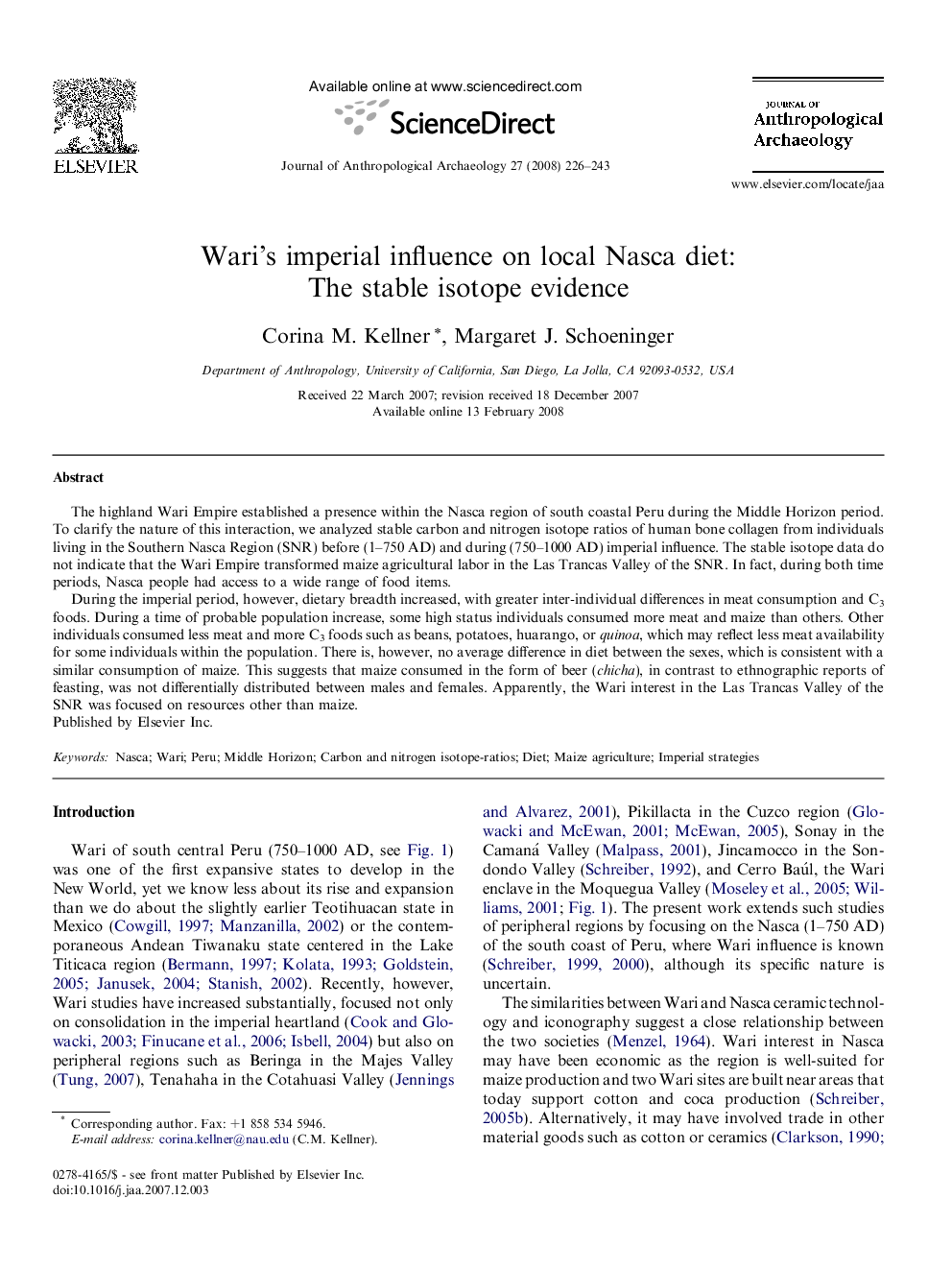| Article ID | Journal | Published Year | Pages | File Type |
|---|---|---|---|---|
| 1035225 | Journal of Anthropological Archaeology | 2008 | 18 Pages |
The highland Wari Empire established a presence within the Nasca region of south coastal Peru during the Middle Horizon period. To clarify the nature of this interaction, we analyzed stable carbon and nitrogen isotope ratios of human bone collagen from individuals living in the Southern Nasca Region (SNR) before (1–750 AD) and during (750–1000 AD) imperial influence. The stable isotope data do not indicate that the Wari Empire transformed maize agricultural labor in the Las Trancas Valley of the SNR. In fact, during both time periods, Nasca people had access to a wide range of food items.During the imperial period, however, dietary breadth increased, with greater inter-individual differences in meat consumption and C3 foods. During a time of probable population increase, some high status individuals consumed more meat and maize than others. Other individuals consumed less meat and more C3 foods such as beans, potatoes, huarango, or quinoa, which may reflect less meat availability for some individuals within the population. There is, however, no average difference in diet between the sexes, which is consistent with a similar consumption of maize. This suggests that maize consumed in the form of beer (chicha), in contrast to ethnographic reports of feasting, was not differentially distributed between males and females. Apparently, the Wari interest in the Las Trancas Valley of the SNR was focused on resources other than maize.
